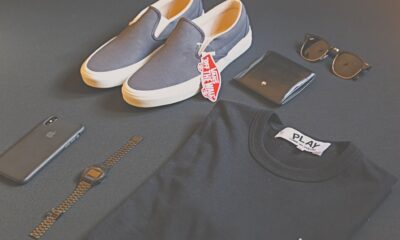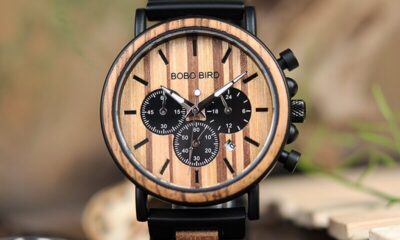Fashion
10 Timeless Men’s Dressing Styles That Instantly Elevate Your Look to Exude the Elegance and Prestige of a True Nobleman
The way we present ourselves has never been more crucial, in a world where first impressions can make or break relationships. Dressing well not only reflects personal taste but also conveys confidence, respect, and a sense of dignity. The idea of dressing like a nobleman evokes images of timeless elegance, sophistication, and an air of distinction. While the fashion landscape has evolved over the centuries, the principles of noble dressing remain rooted in classic styles, meticulous attention to detail, and a commitment to quality.
This article explores ten dressing styles that can help any man project an image of nobility. Each style is grounded in historical significance, yet adaptable to modern sensibilities. Whether you’re attending a formal event, a business meeting, or a casual gathering, these styles will ensure that you always stand out as a gentleman of impeccable taste and refinement.
1. The Classic Suit: A Staple of Elegance
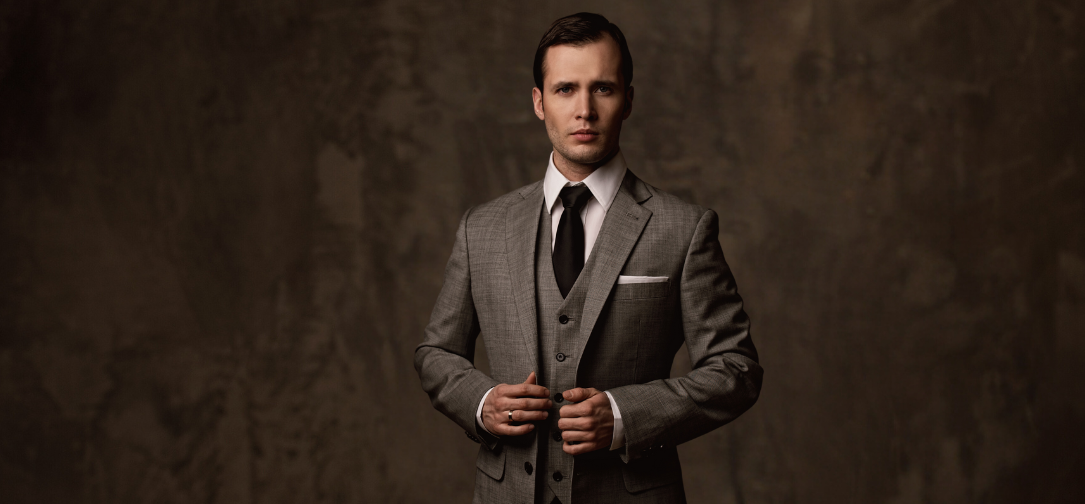
Historical Significance
The classic suit has long been associated with power, authority, and sophistication. Its origins can be traced back to the early 19th century when Beau Brummell, a British dandy, popularized the concept of tailored clothing. The suit became a symbol of the modern gentleman, a uniform of the elite that exuded confidence and control.
Modern Adaptation
Today, the suit remains a cornerstone of noble dressing. A well-tailored suit, preferably in shades of navy, charcoal, or black, is essential for any man aspiring to a noble appearance. The key is fit—your suit should be neither too tight nor too loose, allowing for a clean, structured silhouette. Pairing your suit with a crisp white shirt, a silk tie, and polished leather shoes will complete the look. For added flair, consider a pocket square, cufflinks, or a tie bar, but always remember that subtlety is key to maintaining an air of sophistication.
Key Elements:
- Fabric: Opt for high-quality wool, cashmere, or blends for durability and comfort.
- Fit: Tailoring is crucial; a bespoke or well-altered suit will make a significant difference.
- Color: Stick to classic colors like navy, grey, and black for versatility.
- Accessories: Minimalistic but thoughtful accessories such as a pocket square or cufflinks add refinement.
2. The Tuxedo: The Epitome of Formal Elegance
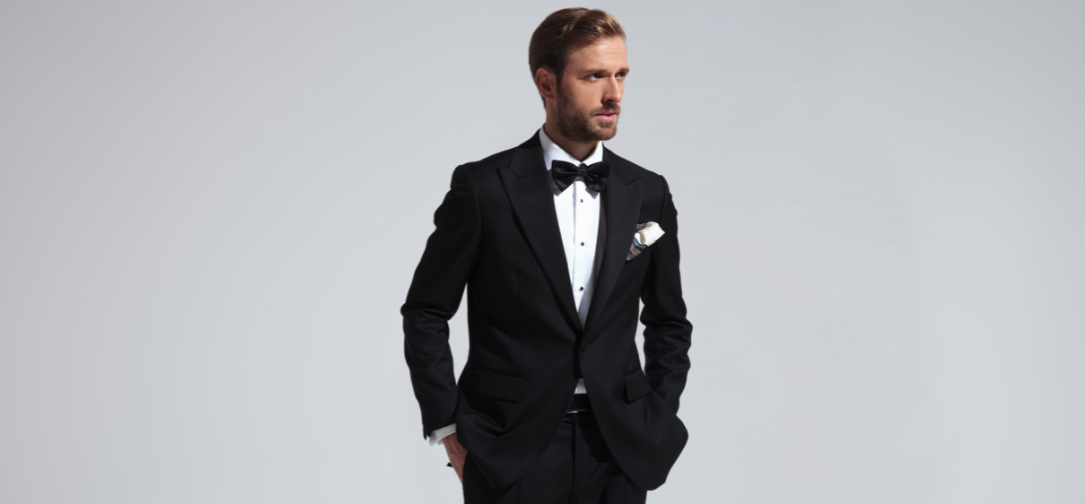
Historical Significance
The tuxedo, or dinner jacket, originated in the late 19th century as a less formal alternative to the tailcoat. It quickly became the standard for evening wear among the upper echelons of society, symbolizing a man of taste and distinction.
Modern Adaptation
In today’s world, the tuxedo is reserved for the most formal occasions—black-tie events, galas, and weddings. A well-fitted tuxedo in black or midnight blue, paired with a white dress shirt and a black bow tie, is the ultimate expression of elegance. The tuxedo’s sleek lines and luxurious fabric create a polished, dignified appearance that commands respect.
Key Elements:
- Fabric: Satin or grosgrain lapels add a touch of luxury; opt for a wool base for comfort.
- Fit: A slim, tailored fit is modern and flattering.
- Shirt: A white dress shirt with a wing or spread collar is traditional.
- Accessories: A black bow tie, cummerbund, or waistcoat, and patent leather shoes complete the ensemble.
3. The Double-Breasted Blazer: A Statement of Power

Historical Significance
The double-breasted blazer has its roots in military uniforms and naval attire, symbolizing authority and power. In the early 20th century, it transitioned into civilian fashion, becoming a favorite among businessmen and aristocrats.
Modern Adaptation
The double-breasted blazer is ideal for making a bold statement. It exudes confidence and a sense of command, making it perfect for important meetings or formal events. Pair it with tailored trousers and a crisp dress shirt. While traditionally worn with a tie, modern interpretations allow for a more relaxed approach, such as an open collar.
Key Elements:
- Buttons: Six-button configurations are classic; ensure the top buttons are unfastened for a refined look.
- Fit: Slim and tailored to prevent a bulky appearance.
- Color: Navy, grey, or deep green are sophisticated choices.
- Accessories: A tie and pocket square in complementary tones elevate the outfit.
4. The Tailcoat: A Throwback to Aristocracy
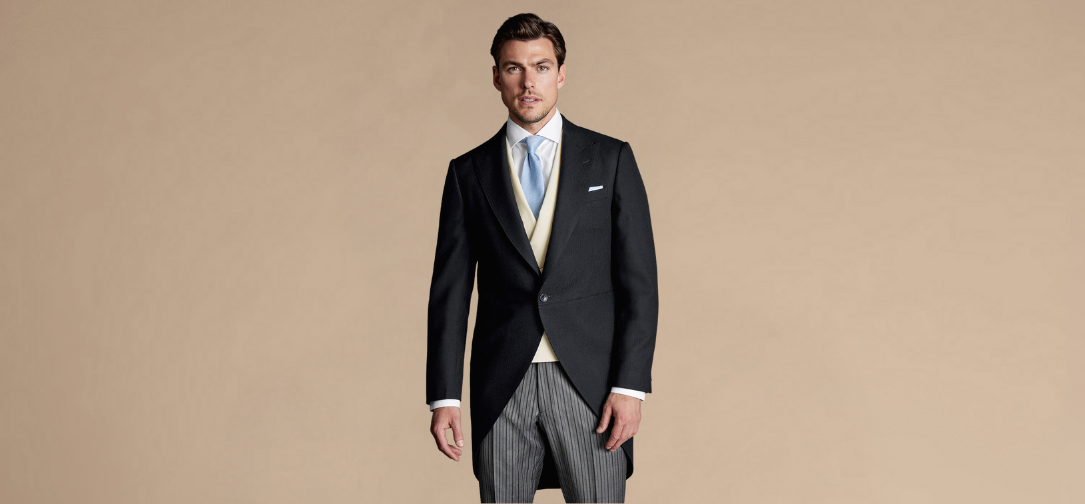
Photo Credit: Charles Tyrwhitt
Historical Significance
The tailcoat was the pinnacle of men’s fashion during the 18th and 19th centuries, worn by royalty and nobility during formal occasions. It is the most formal type of evening dress, traditionally paired with a white tie.
Modern Adaptation
While the tailcoat is rarely seen outside of the most formal settings today, it remains an essential component of traditional white-tie attire. When attending a state dinner, a royal event, or an old-world ball, nothing rivals the grandeur of a tailcoat. The ensemble includes a black tailcoat, white waistcoat, white bow tie, and patent leather shoes. This style is not for everyday wear but when the occasion calls for it, a tailcoat will make you look like you stepped out of an aristocratic portrait.
Key Elements:
- Tailoring: Precision is key; the coat should hug the torso and flare out gracefully at the hips.
- Shirt: A white dress shirt with a wing collar is traditional.
- Waistcoat: A white piqué waistcoat adds a layer of refinement.
- Accessories: A white bow tie, white gloves, and black patent leather shoes are mandatory.
5. The Morning Suit: Daytime Formality with a Regal Touch

Historical Significance
The morning suit, once the standard daytime formal wear for the upper classes, is still worn today at weddings, horse races, and other formal daytime events. Its origins date back to the 19th century when it was worn by gentlemen during the day for social and ceremonial occasions.
Modern Adaptation
A morning suit consists of a tailcoat (cutaway coat), waistcoat, and striped trousers. The coat is usually black or grey, paired with a light-colored waistcoat and a crisp white shirt. The outfit is completed with a silk tie or cravat, and a top hat for the most formal occasions. Although less common today, wearing a morning suit instantly conveys a sense of tradition and nobility, making it perfect for a wedding or a day at the races.
Key Elements:
- Coat: A black or grey morning coat with tails.
- Trousers: Striped trousers in grey and black.
- Shirt: A white dress shirt with a stiff collar.
- Accessories: A silk tie, waistcoat, and optional top hat for the full effect.
6. The Three-Piece Suit: Timeless Elegance
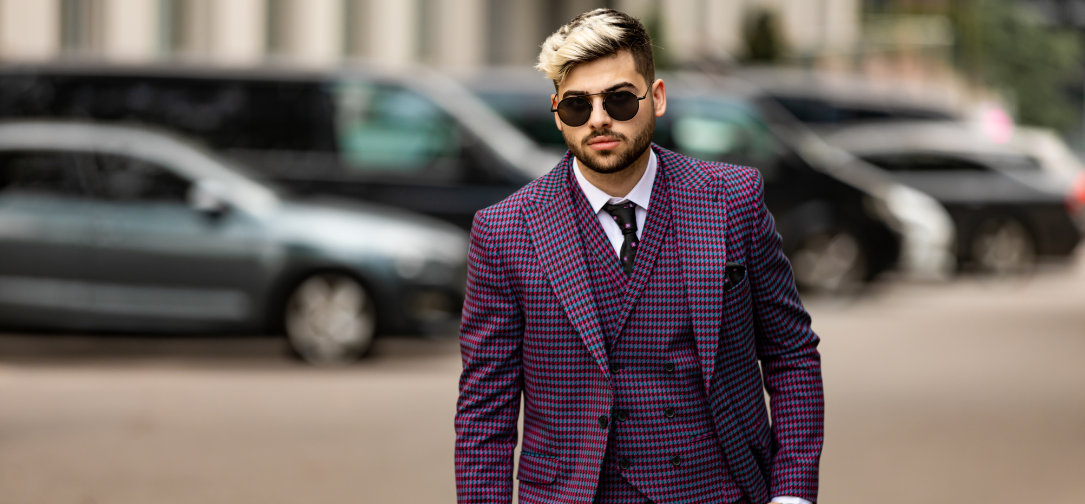
Historical Significance
The three-piece suit, featuring a jacket, trousers, and a waistcoat, became popular in the early 20th century. It was the standard for businessmen and gentlemen alike, offering both formality and flexibility.
Modern Adaptation
The three-piece suit is ideal for those who want to add an extra layer of formality and elegance to their attire. The waistcoat adds a touch of sophistication and can be worn with or without the jacket, depending on the setting. This style is perfect for weddings, business meetings, or any event where you want to make a memorable impression. Choose a suit in a classic color like navy, grey, or brown, and pair it with a white or light blue dress shirt.
Key Elements:
- Waistcoat: Should match the suit jacket and trousers for a cohesive look.
- Fit: The suit should be tailored to ensure the waistcoat fits snugly.
- Shirt: A crisp, white or light-colored dress shirt complements the suit.
- Accessories: A tie, pocket watch, and polished leather shoes add to the ensemble.
7. The Trench Coat: Outerwear of the Elite
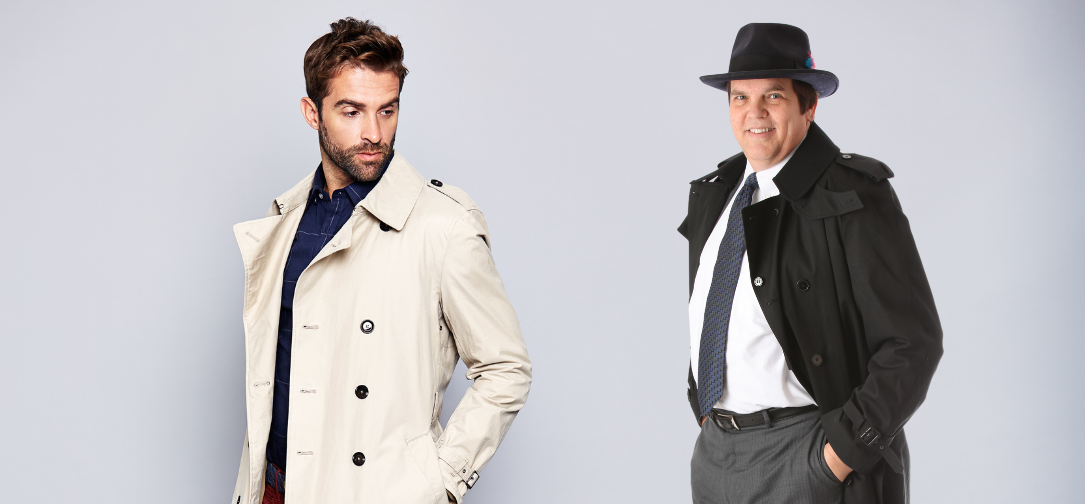
Historical Significance
The trench coat was originally designed for British soldiers during World War I. Its practicality and style quickly made it a favorite among civilians, particularly those in high society.
Modern Adaptation
The trench coat is the epitome of stylish outerwear. Its clean lines, structured fit, and versatile design make it suitable for a variety of occasions. Whether worn over a suit or with casual attire, the trench coat adds an element of sophistication to any outfit. For a truly noble appearance, opt for a classic beige or navy trench coat made from high-quality materials.
Key Elements:
- Fabric: Waterproof and durable, such as gabardine or cotton.
- Fit: The coat should be tailored to allow for layering underneath.
- Color: Classic colors like beige, navy, or black are timeless.
- Accessories: Consider adding a leather belt, gloves, and a fedora for a polished look.
8. The Smoking Jacket: Luxurious Comfort
Historical Significance
The smoking jacket emerged in the 19th century as a gentleman’s leisurewear, typically worn while smoking to protect clothing from tobacco odors and ash. It became a symbol of relaxed elegance in private settings.
Modern Adaptation
While its original function has faded, the smoking jacket remains a symbol of luxury and comfort. Often made from velvet or silk, it is perfect for at-home entertaining or intimate gatherings. Pair it with tailored trousers and a silk shirt for a refined yet relaxed look. The smoking jacket is not meant for formal occasions but is ideal for situations where casual elegance is the goal.
Key Elements:
- Fabric: Velvet or silk for a luxurious feel.
- Fit: Should be comfortable yet tailored.
- Color: Rich, deep colors like burgundy, navy, or emerald are ideal.
- Accessories: Pair with a silk cravat and slippers for a complete look.
9. The Safari Jacket: Adventurous Nobility
Historical Significance
The safari jacket was popularized during the British colonial era, worn by explorers and military personnel in warm climates. It combined practicality with a rugged sense of style, symbolizing adventure and authority.
Modern Adaptation
Today, the safari jacket is a stylish choice for casual outings and travel. Its lightweight fabric, multiple pockets, and belted waist make it both functional and fashionable. Pair it with chinos and a casual shirt for a look that is both relaxed and refined. The safari jacket is perfect for outdoor events, casual meetings, or weekend getaways, projecting an image of a well-traveled, sophisticated man.
Key Elements:
- Fabric: Lightweight and breathable, such as cotton or linen.
- Fit: Should be tailored but allow for movement.
- Color: Khaki, olive, or beige are traditional choices.
- Accessories: A leather belt, sunglasses, and desert boots complete the look.
10. The Peacoat: Naval Tradition Meets Modern Style
Historical Significance
The peacoat has its origins in naval uniforms, designed for sailors who needed warmth and protection at sea. Its double-breasted design and sturdy construction made it ideal for harsh conditions, and it soon became a civilian favorite.
Modern Adaptation
The peacoat is a versatile piece of outerwear that can be dressed up or down. Its structured fit and classic design make it suitable for both formal and casual occasions. Wear it over a suit for a polished look, or pair it with jeans and a sweater for a more relaxed ensemble. A navy or black peacoat, made from wool, is an excellent addition to any wardrobe, offering both style and functionality.
Key Elements:
- Fabric: Heavy wool for warmth and durability.
- Fit: Slim and tailored for a modern appearance.
- Color: Navy and black are timeless and versatile.
- Accessories: Pair with a scarf, gloves, and leather boots for a complete winter look.
Conclusion
Dressing like a nobleman in the modern era is not about adhering strictly to historical fashion but rather about embodying the qualities that have long been associated with nobility—elegance, refinement, and attention to detail. The ten dressing styles outlined in this article provide a blueprint for any man who wishes to project an image of sophistication and authority.
By investing in quality pieces, focusing on fit, and paying attention to the subtleties of style, you can elevate your wardrobe and make a lasting impression. Whether you’re attending a formal event, conducting business, or simply going about your daily life, these dressing styles will ensure that you always look and feel like a nobleman.
Remember, true nobility is not just about outward appearance; it’s about carrying yourself with dignity, confidence, and respect for others. When you dress the part, you’re not just wearing clothes; you’re making a statement about who you are and the values you uphold.
Photo Credit: Canva
-

 Business6 days ago
Business6 days agoS&P 500 Soars in Best May in Decades Amid Tariff Relief and Nvidia’s Surge
-

 Immigration6 days ago
Immigration6 days agoTrump’s Immigration Crackdown: Legal Battles and Policy Shifts
-

 Business6 days ago
Business6 days agoUS Stock Market Soars in May Amidst Tariff Tensions and Inflation Worries
-

 Government6 days ago
Government6 days agoTrump Administration’s Government Reshaping Efforts Face Criticism and Legal Battles
-

 Business6 days ago
Business6 days agoTrump’s Tariffs: A Global Economic Reckoning
-

 Foreign Policy4 days ago
Foreign Policy4 days agoInside Schedule F: Will Trump’s Federal Workforce Shake-Up Undermine Democracy?
-

 Press Release3 days ago
Press Release3 days agoIn2space Launches Campaign to Make Space Travel Accessible for All








